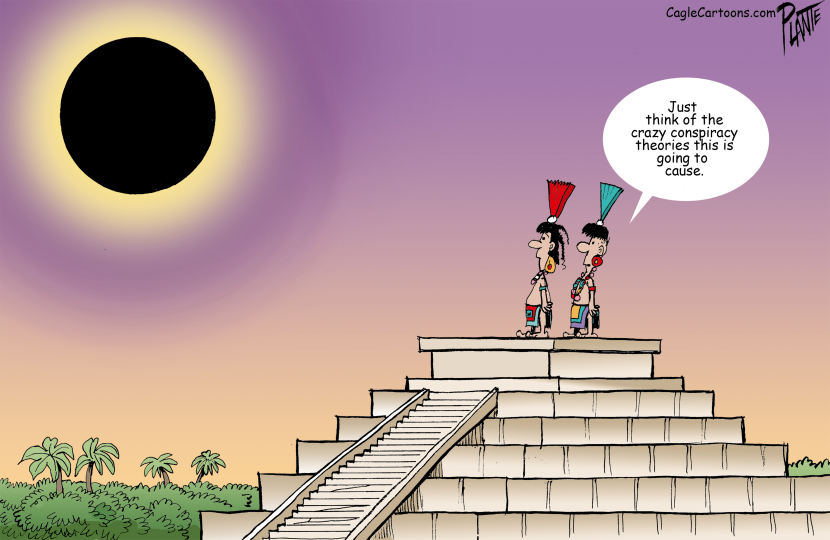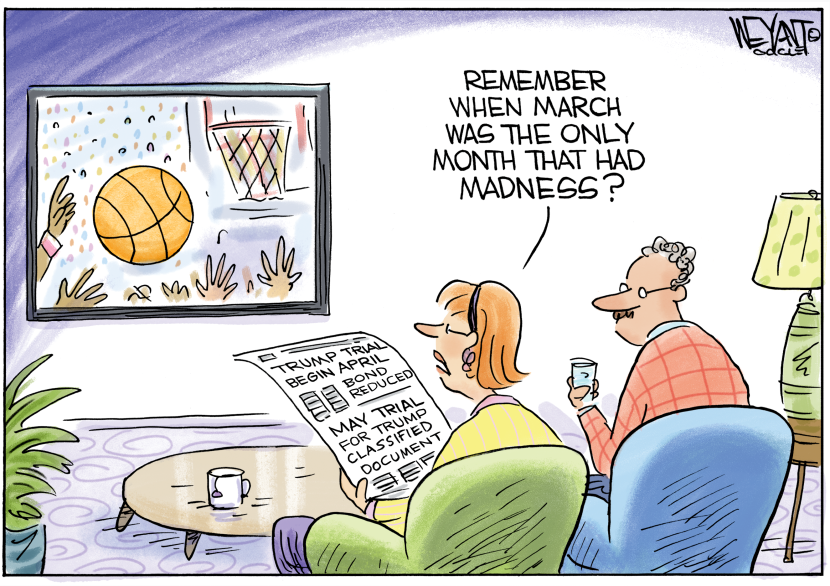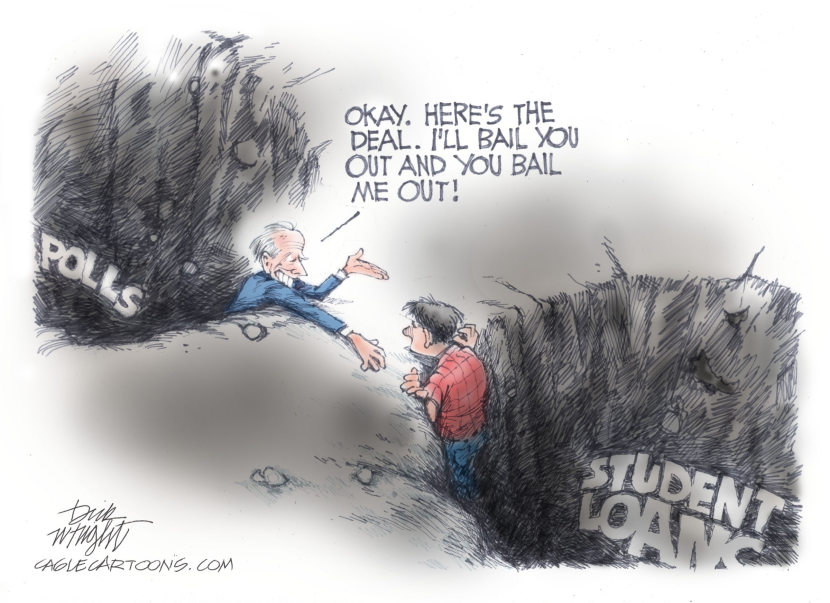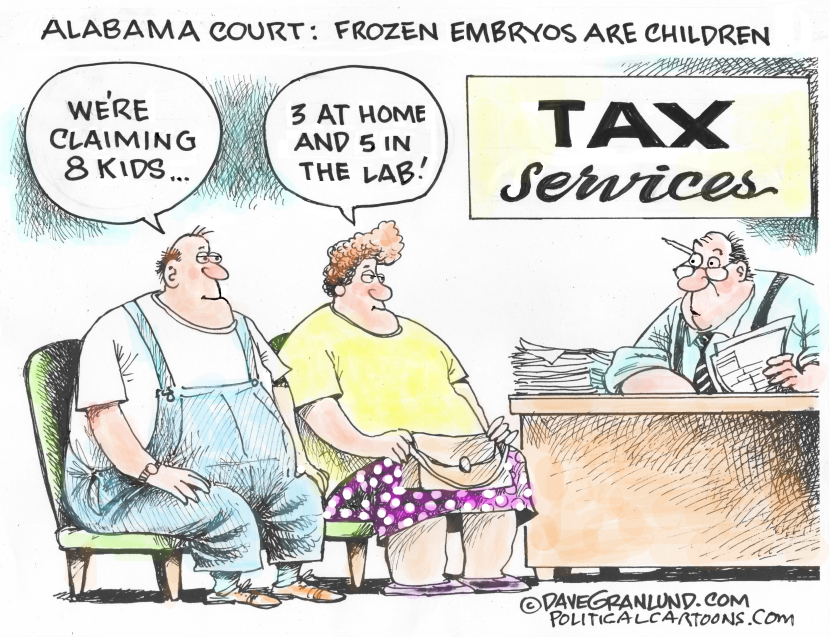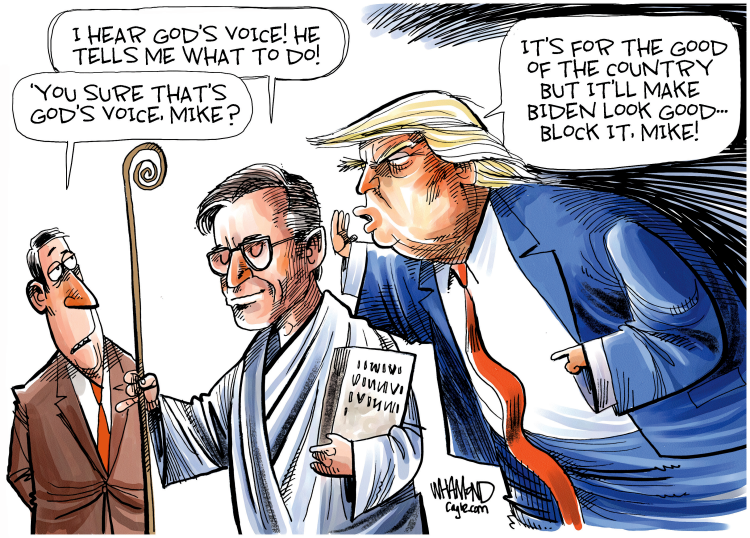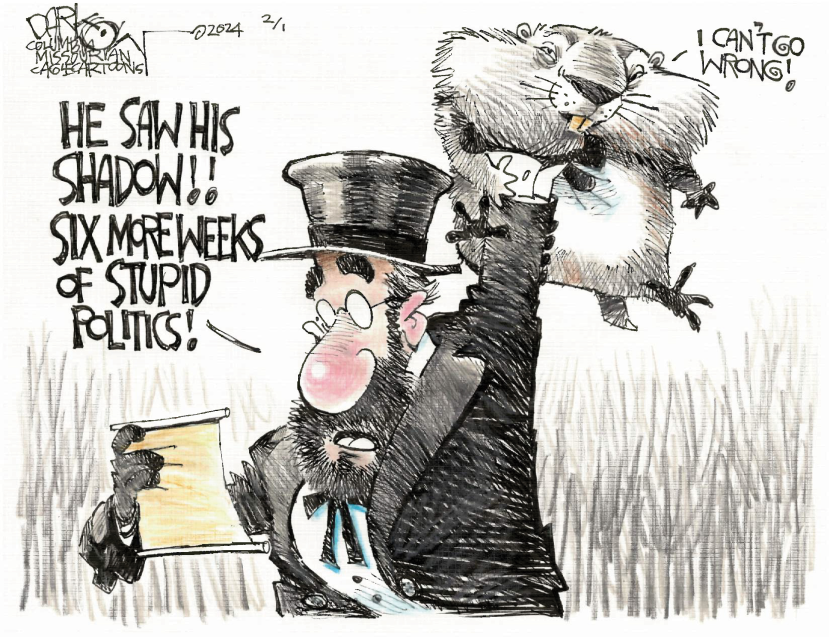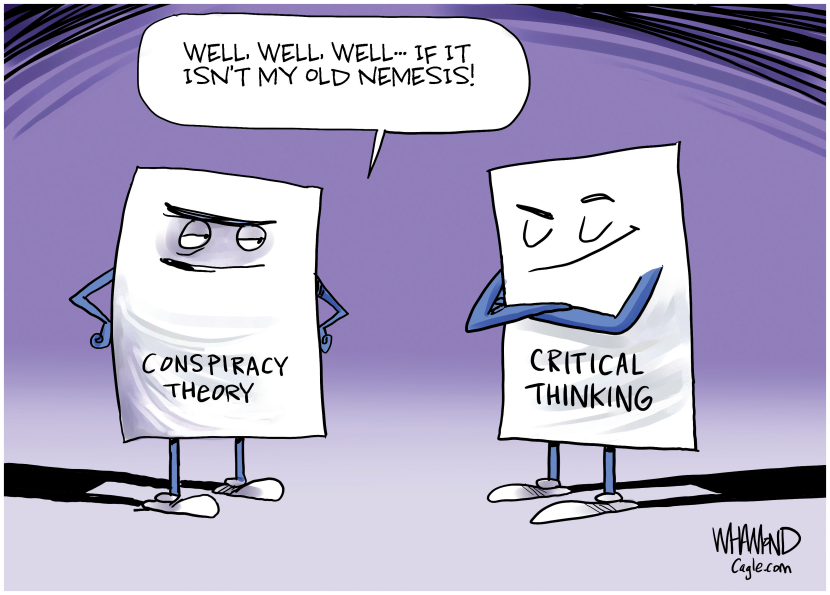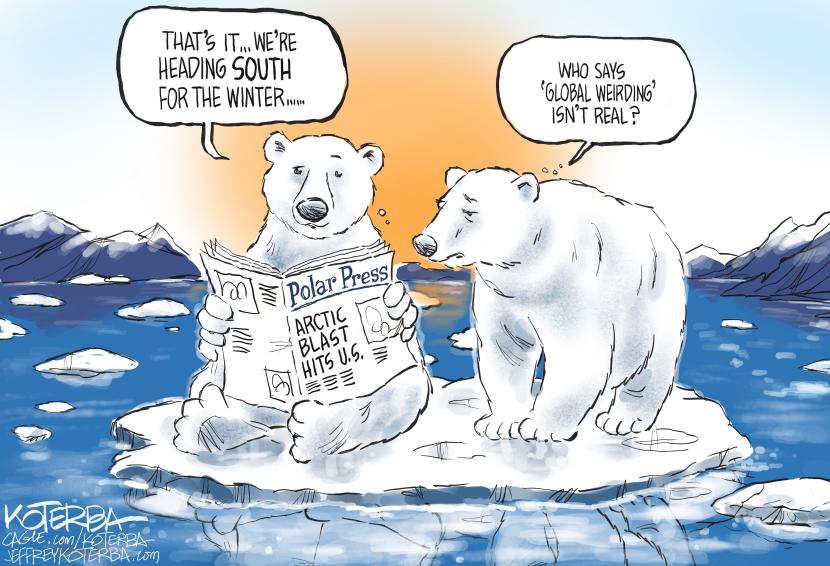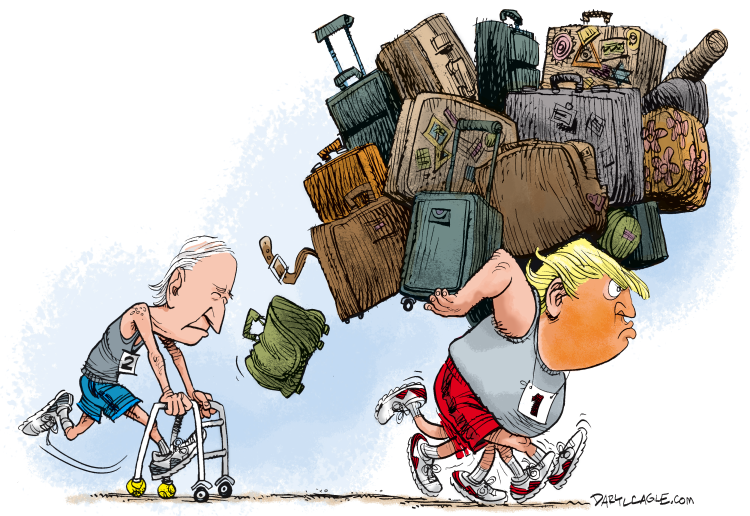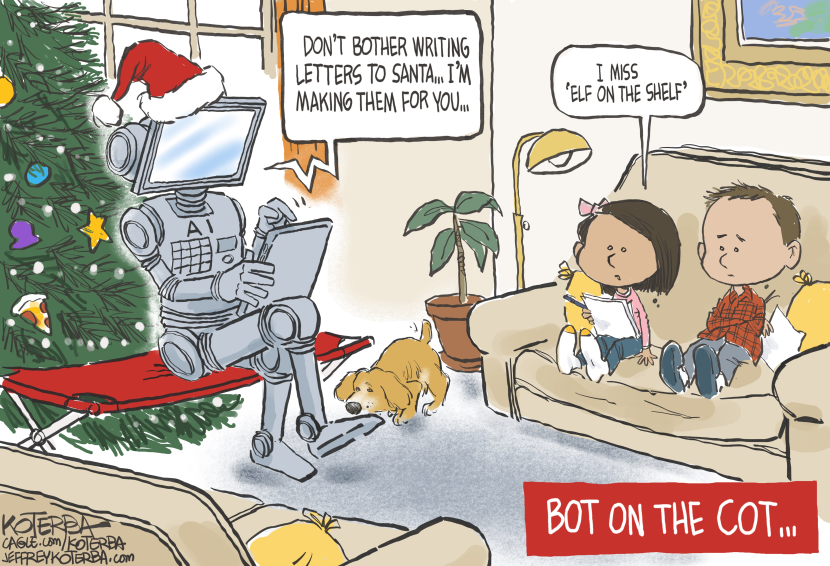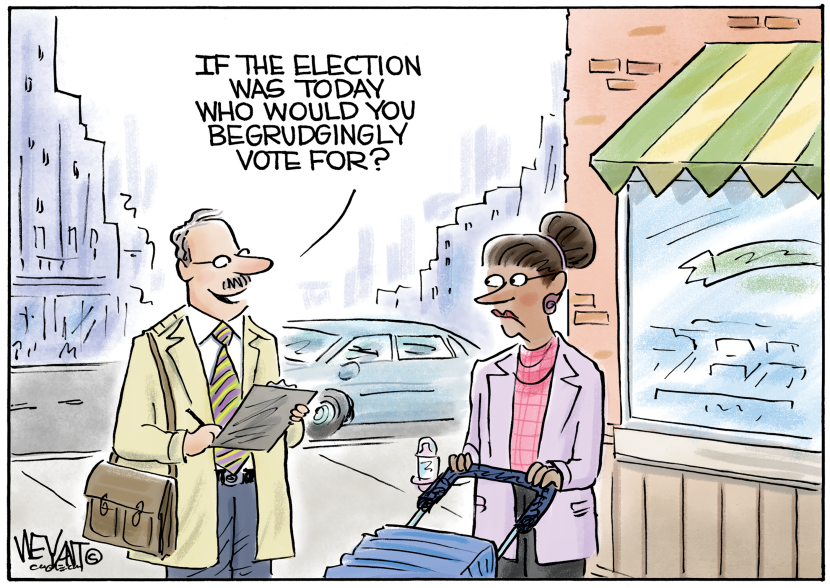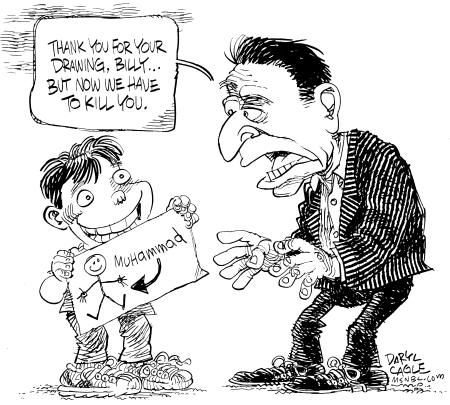The conflict between Israel and the Palestinians still looms large in cartoons around the world, with an endless flow of cartoons from Arab countries showing monster-Israel assaulting, eating, crushing or somehow decimating the poor Palestinians. The dove of peace has been killed by Israel in every imaginable cartoon – crushed, squeezed, stabbed, burned, eaten. Poor bird.
The conflict goes on forever, long after every original cartoon idea has been exhausted. Americans don’t see much of these cartoons because they would be regarded here as anti-Semitic at worst, or as the same thing over and over, at best.

After Algeria, my Middle East speaking tour took me to Egypt, Israel and the Palestinian territories. At my first event in Cairo I spoke to a group of Egyptian journalists who brought a newspaper up to me, proudly pointing out that in Egypt, editorial cartoons are often printed big and in color on the front page of the newspaper. The cartoon they showed me would make an American editor choke; it showed a spitting snake, in the shape of a Star of David; inside the snake/star was a peace dove, behind bars, and above the snake, in Arabic, were the words, “It’s not about the bird flu, it’s about the swine flu.”
I explained that in America this cartoon would be regarded as anti-Semitic, and it would never be printed. The Egyptian journalists were emphatic, explaining to me that the cartoon was about Israel, not about Jews – an important distinction to them.
“Israel isn’t mentioned anywhere in the cartoon,” I said.
“But we all know the Jewish star is the symbol of Israel,” they responded.
I said, “It is a religious symbol. It is the same as if I took the star and crescent off of the flag of Pakistan and drew a similar cartoon, saying it was about Pakistan.” They didn’t respond to me, my comment was such nonsense. I continued, “The cartoon seems to say that Jews are like snakes and pigs.”
“No, no! We have lots of symbols for Israel that we all know, like the Jew with black clothes and a big hooked nose!” one of the Egyptian journalists insisted with some passion. “We like Jews, we just don’t like Israel!”
The newspaper with the cartoon disappeared when I mentioned that I would like to scan the cartoon for a column about our spirited conversation. The Egyptian journalists all continued to insist that I misunderstood what the cartoon meant.
I had an opportunity to meet with a group of Palestinian editorial cartoonists in Gaza by teleconference. I sympathize with their plight; the poor cartoonists had almost no outlets to print their cartoons. One of the Gaza cartoonists showed me a cartoon he was proud of, showing an alligator eating a dove. I told him I didn’t understand the cartoon, and he explained that the alligator was blue, “which everyone understands to be Israel” and the dove had green wings, “which everyone understands to be Palestine.”
I tried to come up with some advice for the Gaza cartoonists on how to get their work published. I suggested that they could submit their work to international publications, but that it would be tough if every cartoon was another Israel/monster cartoon. The cartoonists responded to say that in Gaza, they are under siege, and they don’t care to draw anything else.
I suggested that the Gaza cartoonists need to coax Western editors into printing their cartoons, and they would do well to consider some other angles, for example, drawing about their personal experiences and day-to-day difficulties. Palestinian cartoons criticizing Hamas and Fatah are rarely seen and would get reprinted. I spoke with one West Bank Palestinian cartoonist, Amer Shomali, who lost his gig with his newspaper because he insisted on drawing cartoons critical of Fatah; he was so frustrated that he rented a billboard to post a Fatah cartoon that his newspaper refused to publish. The billboard was swiftly taken down.

I explained to the Gaza cartoonists that when the Israel/Palestine conflict is big in the news, and we post cartoons about the topic on our site, our www.cagle.msnbc.com traffic goes down. Americans are not very interested in events that happen outside of America, especially when it is the same news story, year after year. I told them that the most popular topic ever on our site was Janet Jackson’s boob, and that our readers really like cartoons about cute puppies. Hearing this, the Gaza cartoonists stared at me blankly, and then urged me to organize an international exhibition of cartoons that highlight their plight at the hands of Israel.
Not all Palestinian cartoonists fit the same Israel/monster mold. I met two interesting West Bank cartoonists in Ramallah. The cartoon below is by Khalil Abu Arafeh, who has a nice style and range; he draws for the Al Quds, the big newspaper in the West Bank. This cartoon is about the United Nations Goldstone report, when they were looking for witnesses to testify about Israeli war crimes in the recent Gaza incursion, a lady stands out from the crowd saying, “We are all witnesses.”

Another interesting Palestinian cartoonist in Ramallah is Ramzy Taweel, who draws about everyday life in the West Bank, and posts his cartoons on Facebook here. I regret that they are all in Arabic, and incomprehensible to most of our American audience, but the cartoons are quite nice. Â Befriend Ramzy and take a look at his cartoons. It would be good if we could send a few new Facebook friends Ra
mzy’s way.
After meeting with the Egyptian journalists and Palestinian cartoonists, I spoke in Israel to close to three hundred students in a crowded auditorium at the Bezalel Academy of Art & Design and to a Journalism class at Hebrew University. I also spoke to a journalism class in the West Bank, at Birzeit University. The students were all great fun.
Thanks again to the U.S. State Department for arranging the trip and the speaking engagements.
11/2/09 Postscript
Ramzy Taweel just sent me these interesting cartoons to post here. Â Be sure to friend Ramzi on Facebook to see more cartoons.

